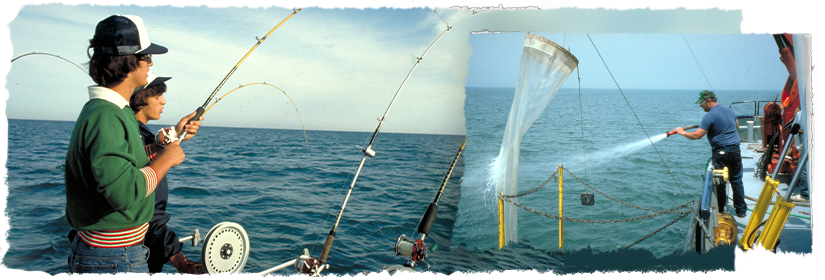At a glance
ATSDR is involved in efforts to protect, restore, and maintain the Great Lakes ecosystem. That includes Lakes Superior, Michigan, Huron, Erie, Ontario, and their connecting waterways. The ecosystem forms the largest surface freshwater system in the world.

Great Lakes Biomonitoring
More than 30 million people (roughly ten percent of the U.S. population, and 30 percent of the Canadian population) live in the Great Lakes basin.
To counteract contamination from human activities and industrial disposal dating back to the early 1900s, Congress funded the Great Lakes Restoration Initiative (GLRI). As part of the GLRI, ATSDR is working with state health departments to collect health data from vulnerable adult populations, including shoreline anglers, licensed anglers, Native Americans, and Burmese refugees and immigrants. A questionnaire captured information about participant demographics, lifestyle factors, and dietary intake, with a focus on locally caught fish consumption.
The Biomonitoring of Great Lakes Populations (BGLP) program is in its third and final phase. The biomonitoring results of BGLP-I and BGLP-II enabled public health and tribal officials to create culturally appropriate educational materials and advisory messages, reaching over 3,000 people on the risks and benefits of eating select locally caught fish. For BGLP-III, 505 study participants (398 licensed anglers and 107 Burmese participants) have completed a questionnaire and provided blood and urine samples. State health technicians will be measuring the amounts of environmental chemicals in the samples.
The three cross-sectional studies review exposure at specific points in time. This is important because many of the toxic chemicals responsible for creating designated areas of contamination (AOCs) remain as "legacy pollutants." Decades after being banned or phased out of commercial use, legacy pollutants linger in the environment and can be left behind in the bodies of fish and other wildlife. To date, ATSDR has discovered more than 70 chemicals in human blood and urine samples, including metals, persistent pesticides, polychlorinated biphenyls, dioxins or dioxin-like compounds, polybrominated diphenyl ethers, and per- and polyfluoroalkyl substances (PFAS).
Return to Where ATSDR Works Index

